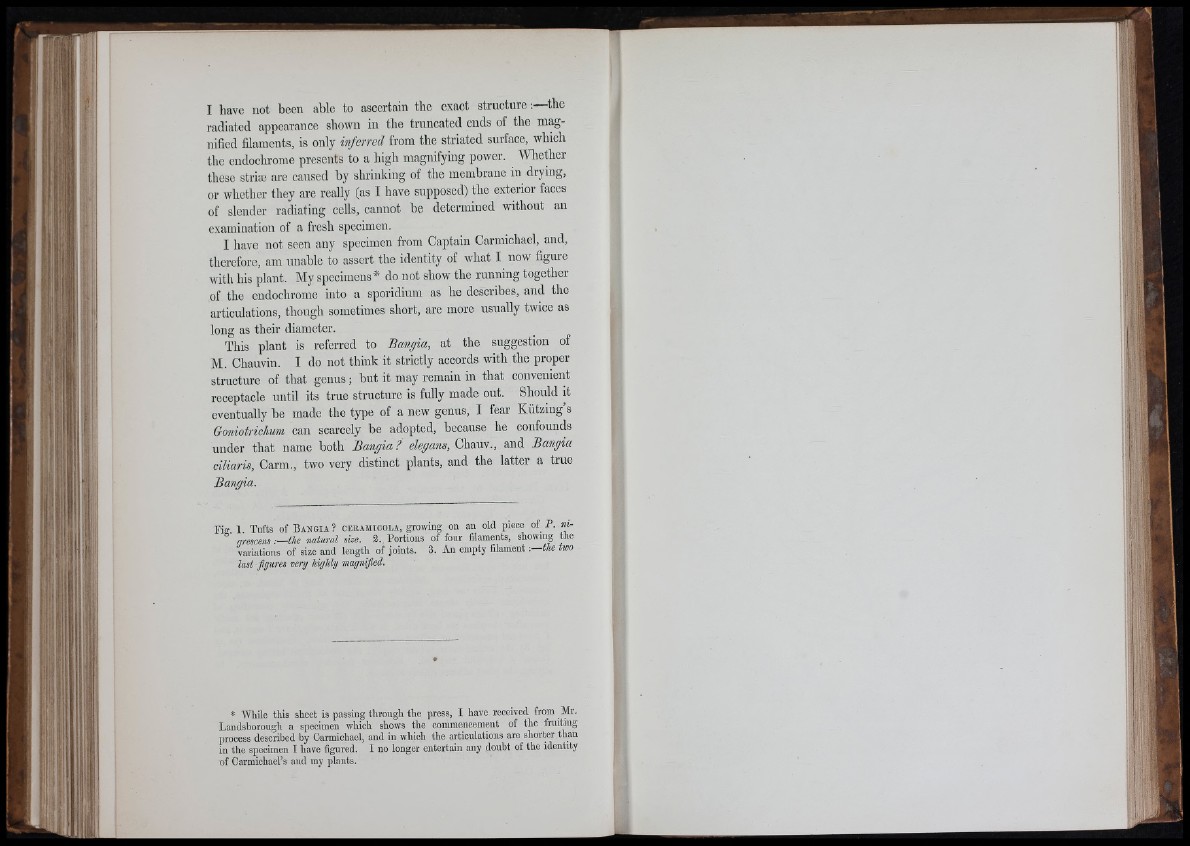
I have not been able to ascertain the exact structure;—the
radiated appearance shown in tbe truncated ends of tbe magnified
filaments, is only inferred from the striated surface, which
tbe endochrome presents to a high magnifying power. Whether
these striæ are caused by shrinking of tbe membrane in drying,
or whether they are really (as I have supposed) tbe exterior faces
of slender radiating cells, cannot be determined without an
examination of a fresh specimen.
I have not seen any specimen from Captain Carmichael, and,
therefore, am unable to assert the identity of wbat now figure
witb bis plant. My specimens* do not show the running together
of tbe endochrome into a sporidium as he describes, and the
articulations, though sometimes short, are more usually twice as
long as their diameter.
This plant is referred to Bangia, at the suggestion of
M. Chauvin. I do not think it strictly accords with the proper
structure of that genus ; but it may remain in that convenient
receptacle until its true structure is fully made out. Should it
eventually be made the type of a new genus, I fear Kfitzing’s
Goniotriclmm can scarcely be adopted, because he confounds
under that name both Bangia? elegans, Chauv., and Bangia
ciliaris, Carm., two very distinct plants, and the latter a true
Bangia.
Fio- 1. Tufts of B a n g ia ? oekamioola, growing on an old piece of P . w-
° qrescem .— the natural size. 2. Portions of four filaments, showing the
variations of size and length of joints. 3. An empty filament -.— the two
last figures very highly magnified.
* While this sheet is passing through the press, I have received from Mr.
Landsborough a specimen which shows the commencement of the fruiting
process described by Carmichael, and in which the articulations are shorter than
in the specimen I have figured. I no longer entertain any doubt of the identity
of Carmichael’s and my plants.
it
i
I'il
É i